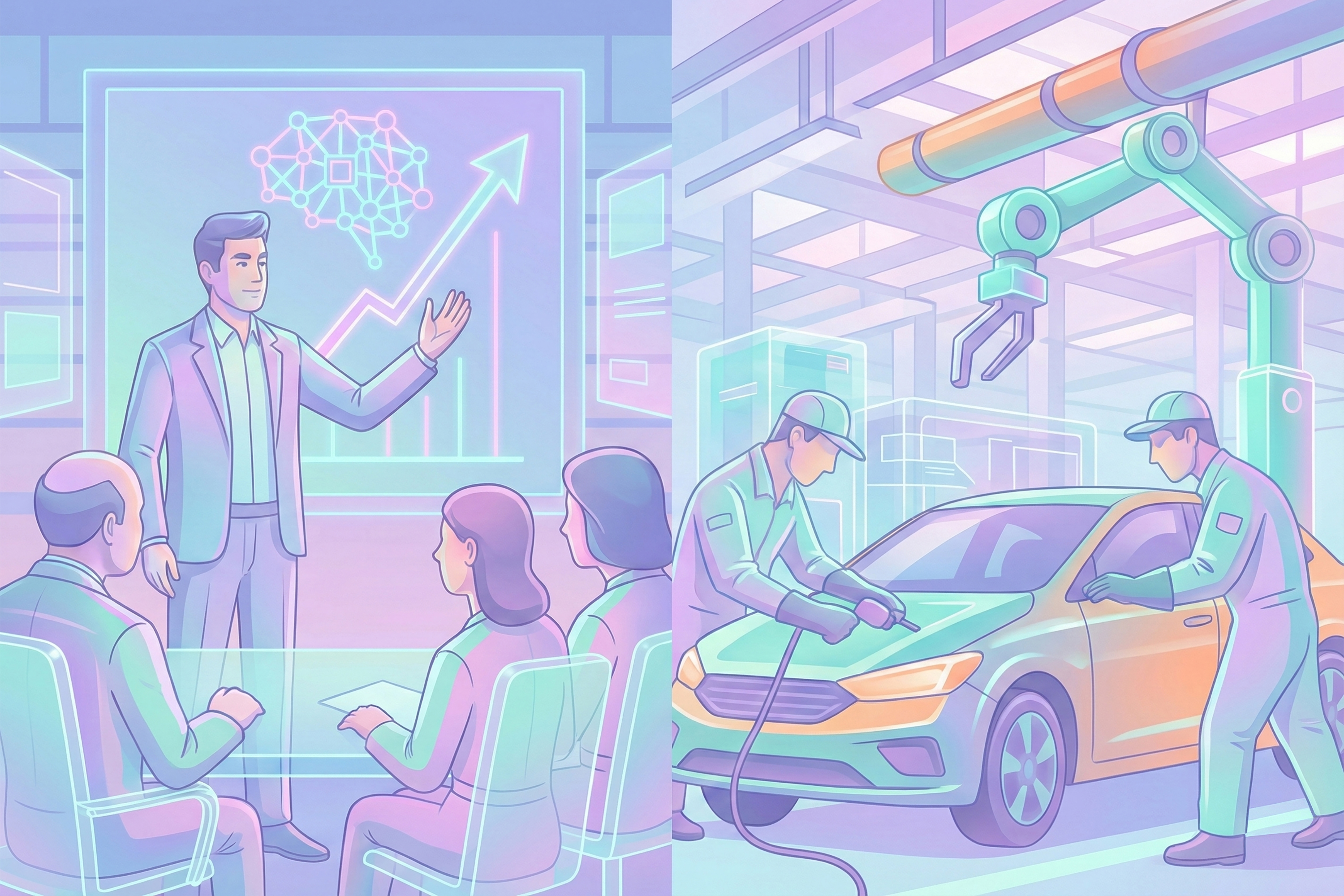
This year, we have written extensively about four domains of everyday life that are being disrupted by digital technology. Mobility, health, food and education have to adapt to changing consumer preferences and societal challenges and new technologies will shake up existing value chains. Below, you’ll find our take on these changes.
Many car manufacturers made bold promises, under the pressure of regulators (and Elon Musk) to mass-market their own battery-electric or hydrogen vehicles. One of the questions looming over the automotive industry is, however, whether consumers will continue to buy and use cars to the extent they do today. Policy makers are seeking ways to get people out of their cars (often in order to improve local air quality) and improve public transportation, through Mobility-as-a-Service initiatives, for instance. Insofar as people will continue to get around by car, the question is whether they will still drive themselves. Despite several accidents, both carmakers and tech companies are busy developing and testing their autonomous vehicles. While most analysts have talked about safety and the infamous trolley problem, we have asked how these vehicles may change our everyday lives. Autonomous cars are bound to change the layout of our cities and, in a similar vein, other technologies (e.g. cheaper and faster tunneling) may lead to vertical cities and the comeback of supersonic flight could lead to a handful of hyper-connected, and hence hyper-attractive, global cities.
A future in which genetic modifications give us enhanced physical and cognitive capabilities came a bit closer in 2018. Eventually, this will give us the possibility to rethink our human design, but much sooner, genetic data will allow us to unravel our personalities. Along with advanced genetic research, new insights regarding our health have also led to a return to traditional thinking and more holistic approaches to health. The latter related to an increasing focus on prevention instead of care, for example by critically reexamining our diet, the growing awareness of the importance of mental health and the development of digital tools to detect early signs of illness. Even the importance of (urban) infrastructure in stimulating healthier lifestyles was taken into account in 2018.
Despite this broadening perspective, medical care will be needed in the future and it is thus no surprise that Big Tech showed ambitions to disrupt the healthcare value chain. At the same time, a real breakthrough for e-health has not taken place in 2018. Still, initiatives to make e-health applications more user-friendly and introduce gaming elements, could drive its adoption in the coming years and even boost digitalization in other fields as well.
2018 has shown growing concerns over food security and ways to feed a growing population in a world of climate change. For instance, rising carbon dioxide levels in the air may make plants grow faster, but it also makes them less nutritious, i.e. the “nutrient collapse”. And, while maintaining biodiversity is crucial to the health of our ecosystems and varied diets are key to our wellbeing, food supplies around the world have become more similar, resulting in expansive monocultures for the intense cultivation of a few select staple crops. Indeed, whether the UN’s Sustainable Development Goals will be met depends largely on the sustainability of the global food system. As we have discussed over the year, in an increasingly urbanizing world population, the city is becoming an integrated landscape for both people and agriculture. Moreover, emerging digital technology is not only making cities smarter, it is also enabling the digitization of the food chain. Biotechnological advancements, such as the gene-editing tool CRISPR, and advancements in the field of genetics are leading to possibilities in crop improvements, disease control and other ways to transform selection processes in agriculture and first steps to the holy grail of personalized food and medicine.
This year, preparing ourselves and future generations for the Fourth Industrial Revolution has become an even more pressing topic, as a skills gap in future graduates is still on the rise. Education systems are being reevaluated around the world, and Technical skills and a set of “soft skills” are top requirements on the list of future-proof education. Although we have always thought that at least our emotional and social qualities would be safe from being replaced by computers, A.I. has been shown to carry out many social and emotional tasks. Furthermore, we have seen an increasing acceptance of these systems doing so. As globalization is moving forward, the knowledge and skills that are required become less related to specific cultures and more alike in each community. These developments increase the popularity of tech solutions that transcend country borders, the one-size-fits-all model of current education systems or the limitations of classroom lectures, such as K-12 online tutoring, personalized learning, online education in the corporate sector, YouTube as a learning tool and VR in the classroom. Whether the current changes that education is going through (e.g. schoolification) are taking place fast enough to keep up with new tech-savvy generations is unclear and the looming skills gap seems to remain in the foreseeable future. As a consequence, kids might increasingly turn directly to companies or start their own business instead of pursuing higher education, in order to develop themselves in a way that resonates with their lifestyle and offers a more solid perspective on a job/income.


